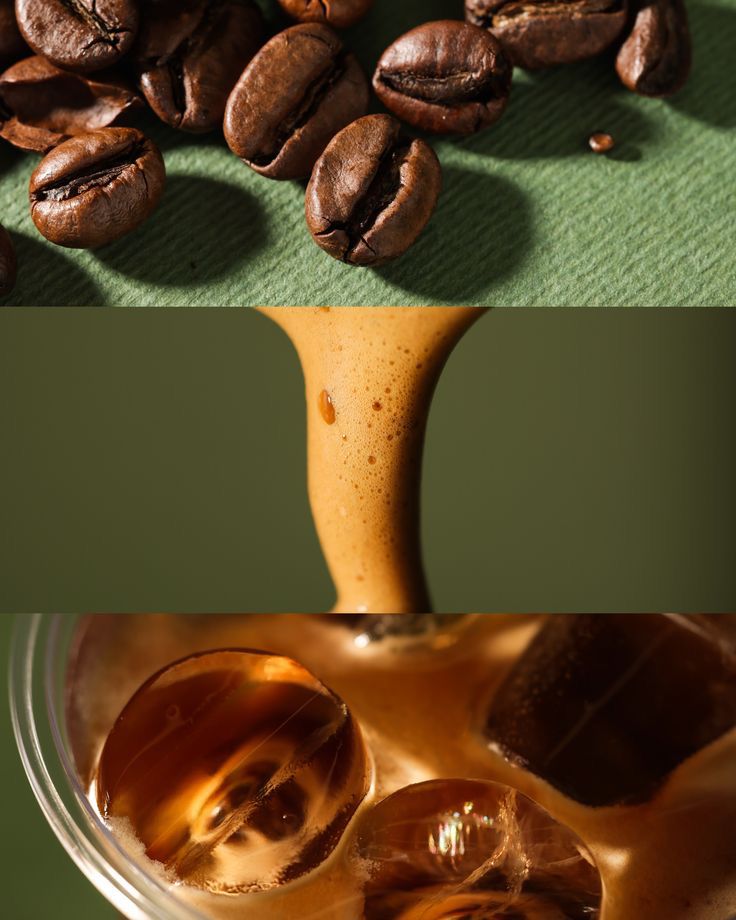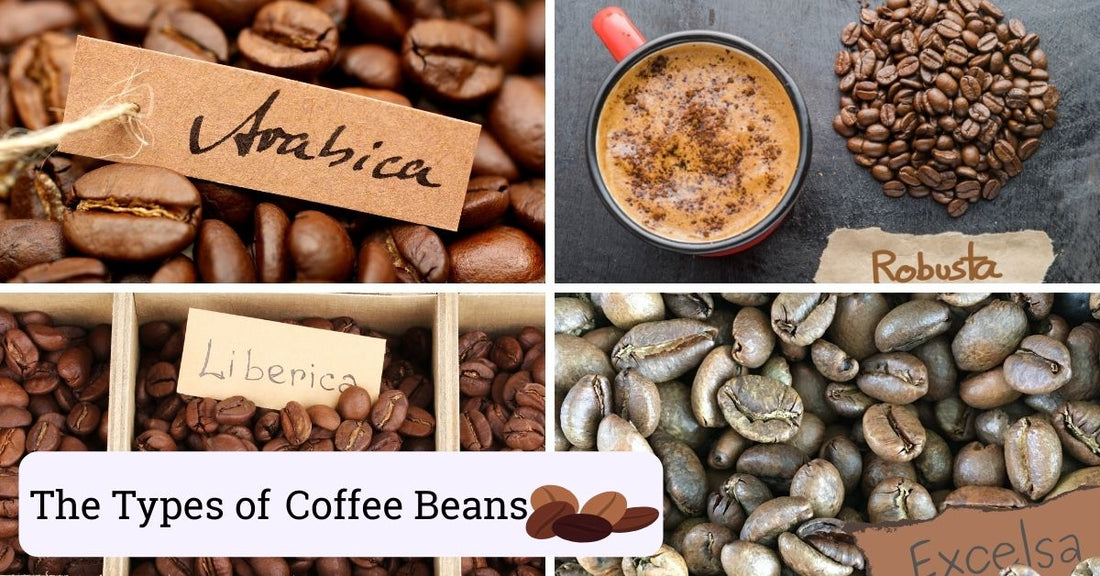أولا: المقدمة
القهوة من أقدم المشروبات وأكثرها شعبية في العالم. من الإسبريسو الخفيف والهش إلى مزيج القهوة الداكن المحمص القوي واللذيذ، قد يصعب عليك اختيار نوع حبوب البن المناسب. ولكن مع تنوع أنواع حبوب البن، ولكل منها نكهته الفريدة، ليس من الصعب العثور على ما يناسب ذوقك. في هذه المقالة، سنلقي نظرة على بعض أشهر أنواع حبوب البن ونكهاتها المميزة.
أ. لمحة موجزة عن حبوب البن وأهمية نكهاتها
حبوب البن، التي تُستخرج من بذور ثمرة تشبه الكرز، تلعب دورًا أساسيًا في نكهة كل كوب قهوة. تختلف أنواع البن باختلاف نكهاتها، والتي تتراوح بين الخفيفة والخفيفة والقوية والمدخنة. يُعد فهم هذه النكهة أمرًا بالغ الأهمية لأي باريستا أو مُحضّر قهوة منزلي يرغب في تحضير كوب مثالي. إليك لمحة موجزة عن بعض أشهر أنواع حبوب البن ونكهاتها الفريدة.
ب. نوعان رئيسيان من حبوب البن: أرابيكا وروبوستا
عند الحديث عن أنواع مختلفة من حبوب البن، فإن النوعين الأكثر شيوعًا هما أرابيكا وروبوستا. تشتهر أرابيكا بنكهة حلوة وزهرية مميزة ونكهة خفيفة مع لمحات من الكاكاو والمكسرات. أما روبوستا، فتتميز بنكهة أكثر جرأة ومرارة خفيفة ورائحة ترابية. يمكن تحميص كلا النوعين من الحبوب بدرجة فاتحة أو داكنة حسب النكهة المطلوبة.
II. حبوب قهوة أرابيكا
أ. وصف حبوب البن العربي
حبوب قهوة أرابيكا من أشهر أنواع القهوة، وتُقدَّر بنكهاتها المُركَّبة. تتميز برائحة خفيفة وحلوة مع لمحات من الفاكهة والمكسرات، وطعم ناعم وخفيف، غالبًا ما يُوصف بأنه ذو نكهات الكاكاو أو الكراميل. عند تحميصها جيدًا، تُنتج حبوب أرابيكا فنجان قهوة متوازنًا بلمسات زهرية رقيقة.
ب. نكهة خفيفة وحلوة وفاكهية مع نكهات الشوكولاتة والكراميل والمكسرات
تتميز حبوب قهوة أرابيكا عمومًا بنكهة خفيفة وحلوة وفاكهية، مع نكهات من الشوكولاتة والكراميل والمكسرات. تتميز برائحة زكية تُلمح غالبًا إلى نكهات الأزهار والمكسرات. عند تحميصها، تُنتج حبوب أرابيكا فنجان قهوة متوازنًا بلمسات رقيقة. تتميز نكهتها بنكهة الكاكاو أو الكراميل، مع نكهات فاكهية مشرقة تدوم طويلًا في النهاية.
ج. حبوب أرابيكا أغلى ثمناً وتنتج كوبًا من القهوة بجودة أعلى
حبوب قهوة أرابيكا أغلى ثمناً من أنواع القهوة الأخرى، لكنها تُنتج قهوة عالية الجودة. تركيبتها ونكهتها العامة تجعلها خياراً شائعاً بين محبي القهوة، إذ تتميز برائحتها الخفيفة والحلوة مع لمحات من الفاكهة والمكسرات، وطعمها المعتدل السلس، الذي غالباً ما يُوصف بأنه يحتوي على نكهات الكاكاو أو الكراميل. تُضفي حبوب أرابيكا التوازن المثالي لفنجان قهوة ممتع.
د. المناطق المختلفة التي تُزرع فيها حبوب أرابيكا وكيف تؤثر ظروف النمو على نكهتها
تُزرع حبوب قهوة أرابيكا في مناطق مختلفة حول العالم، من أمريكا اللاتينية إلى آسيا وأفريقيا. ونظرًا لاختلاف المناخ وظروف الزراعة بين البلدان، قد تختلف نكهة حبوب أرابيكا اختلافًا طفيفًا حسب منشأها. بشكل عام، تتميز قهوة المرتفعات بحموضة أكثر وضوحًا ونكهات فاكهية، بينما تتميز قهوة المرتفعات بنكهة شوكولاتة أو جوزية أكثر. بالإضافة إلى ذلك، يمكن أن تؤثر الظروف الجوية أثناء الحصاد على نكهة حبوب أرابيكا؛ فعلى سبيل المثال، قد تؤدي سنوات الجفاف إلى زيادة الحلاوة، بينما قد تؤدي السنوات الأكثر رطوبة إلى نكهات أكثر حمضية. بمراعاة هذه العوامل، يُمكن تحضير أكواب قهوة فريدة من حبوب أرابيكا ذات نكهات مميزة.
ثالثًا: حبوب قهوة روبوستا
أ. وصف حبوب قهوة روبوستا
تُعرف حبوب قهوة روبوستا بأنها أكثر قوة من حبوب أرابيكا، وتحتوي على نسبة أعلى من الكافيين. تتميز عادةً بنكهة ترابية مُرّة، قد تكون قوية جدًا. يُستخدم هذا النوع من الحبوب عادةً في خلطات الإسبريسو نظرًا لقدرته العالية على إنتاج الكريمة. مقارنةً بحبوب أرابيكا، قد تفتقر قهوة روبوستا أحيانًا إلى الحلاوة والقوام، لكنها تُعوّض عن ذلك برائحتها القوية ونكهتها الجريئة.
ب. ملف النكهة: قوي، مرير، وترابي مع نكهات الشوكولاتة الداكنة والمطاط المحروق
تتميز حبوب قهوة روبوستا عادةً بنكهة قوية ومريرة وترابية، مع نكهات من الشوكولاتة الداكنة والمطاط المحروق. وتحتوي عادةً على نسبة كافيين أعلى من حبوب أرابيكا، وتُستخدم بشكل رئيسي في خلطات الإسبريسو نظرًا لقدرتها على إنتاج الكريمة. تتميز قهوة روبوستا بمرارة قوية، لكنها تُضفي أيضًا حلاوة كامنة لا توجد إلا في هذا النوع من الحبوب. غالبًا ما تُوصف رائحة هذا النوع من القهوة بأنها ترابية ذات مسحة دخانية. وبدمجها مع مكونات النكهة الأخرى، تُقدم قهوة روبوستا كوبًا غنيًا بالنكهة يُرضي جميع مُحبي القهوة.
ج. حبوب روبوستا أقل تكلفة وتستخدم في المقام الأول في القهوة سريعة التحضير ومزيج الإسبريسو
حبوب قهوة روبوستا عادةً ما تكون أقل تكلفة من حبوب أرابيكا، وتُستخدم بشكل أساسي في تحضير القهوة سريعة التحضير ومزيج الإسبريسو. تحتوي على نسبة أعلى من الكافيين، مما يجعلها مثالية لتحضير الإسبريسو. غالبًا ما توصف نكهة هذا النوع من الحبوب بأنها قوية، مُرّة، وترابية، مع نكهات من الشوكولاتة الداكنة والمطاط المحروق. قد تكون مرارة قهوة روبوستا شديدة، لكنها تُضفي أيضًا حلاوة كامنة لا توجد إلا في هذا النوع من الحبوب. ورغم أنها قد تفتقر إلى الحلاوة والقوام مقارنةً بنظيراتها من أرابيكا، إلا أنها تُعوّض ذلك برائحتها القوية ونكهتها الجريئة.
د. المناطق المختلفة التي تُزرع فيها حبوب روبوستا وكيف تؤثر ظروف النمو على نكهتها
تُزرع حبوب قهوة روبوستا بشكل رئيسي في المناطق ذات المناخات الدافئة، مثل أفريقيا وجنوب شرق آسيا. ويلعب نوع التربة ودرجة الحرارة ومعدل هطول الأمطار دورًا مهمًا في نكهة المنتج النهائي. فالمناطق ذات درجات الحرارة المرتفعة تميل إلى إنتاج حبوب ذات مرارة أعلى، بينما تُنتج المناطق ذات درجات الحرارة المنخفضة حبوبًا ذات نكهة أكثر نعومة. كما تؤثر مستويات هطول الأمطار المختلفة على النكهات، حيث تُنتج المناخات الجافة حبوبًا ذات حموضة وحلاوة أعلى. وفيما يتعلق بظروف الزراعة، فإن قهوة روبوستا لها متطلبات فريدة لا تتوفر لدى أرابيكا، مما يجعل التكيف معها أمرًا صعبًا على المزارعين. ومن خلال فهم المناطق المختلفة التي تُزرع فيها حبوب روبوستا وكيف يمكن لظروف الزراعة أن تؤثر على نكهتها، يمكن لعشاق القهوة تقدير هذا النوع من الحبوب بشكل أفضل.
رابعًا. أنواع أخرى من حبوب البن
أ. هناك أنواع أخرى أقل شيوعًا من حبوب البن، مثل Liberica وExcelsa
في حين أن أرابيكا وروبوستا هما النوعان الرئيسيان من حبوب البن، إلا أن هناك أنواعًا أقل شهرة. حبوب ليبيريكا وإكسلسا مثالان على ذلك، ولكل منهما نكهة مميزة. تشتهر ليبيريكا بنكهتها القوية ونكهاتها الغنية بنكهة الكرز الداكن والشوكولاتة والخشب المدخن والهيل. أما إكسلسا، فتتميز بنكهة فاكهية تُذكرنا بالتوت الأزرق أو الكرز الحامض، مع لمحات من العسل والمكسرات. على الرغم من أن هذه الحبوب ليست شائعة مثل أرابيكا أو روبوستا، إلا أنها متوفرة في المتاجر المتخصصة، وهي جديرة بالاستكشاف إذا كنت تبحث عن تجربة جديدة.
ب. ملامح النكهة
تشتهر حبوب أرابيكا بنكهتها الناعمة والرقيقة ونكهاتها الحلوة. تتميز حبوب روبوستا بنكهة أكثر قوة وكثافة مع لمحات من الشوكولاتة والمكسرات. تتميز ليبيريكا بنكهة قوية مع نكهات الكرز الداكن والشوكولاتة والخشب المدخن والهيل. أما إكسلسا، فهي فاكهية بنكهات تذكرنا بالتوت الأزرق أو الكرز الحامض مع لمحات من العسل والمكسرات. يمكن تحضير القهوة من أي من هذه الأنواع من الحبوب بدرجات تركيز متنوعة، مما يتيح لك تخصيص النكهة حسب تفضيلاتك.
العوامل المؤثرة على نكهة القهوة
أ. تتأثر نكهة القهوة بعوامل مثل مستوى التحميص وحجم الطحن وطريقة التخمير وجودة المياه
يختلف طعم القهوة اختلافًا كبيرًا تبعًا لعدة عوامل، مثل نوع حبوب البن المستخدمة، ودرجة التحميص، وحجم الطحن، وطريقة التخمير، وجودة الماء. يساهم كل عامل في النكهة العامة وقوة القهوة. على سبيل المثال، يكون التحميص الداكن أقوى من التحميص الفاتح. وبالمثل، ينتج عن استخدام طحن ناعم مشروب أقوى من استخدام طحن خشن. بالإضافة إلى ذلك، تؤثر طرق التخمير المختلفة أيضًا على نكهة قهوتك - فكل من الإسبريسو والفرنش برس يعطيان نتائج مختلفة تمامًا على الرغم من صنعهما من نفس حبوب البن. وأخيرًا، تؤثر جودة الماء المستخدم أيضًا على المنتج النهائي؛ احرص دائمًا على استخدام ماء مفلتر أو مياه معدنية للحصول على أفضل النتائج.
ب. كيف يؤثر كل من هذه العوامل على نكهة القهوة
يُعدّ نوع حبوب البن المستخدمة أحد أهم العوامل في تحديد نكهة قهوتك. تتميز حبوب أرابيكا بنعومتها ودقتها مع نكهات حلوة، بينما تتميز حبوب روبوستا بنكهة أقوى وأكثر كثافة مع لمحات من الشوكولاتة والمكسرات. تتميز حبوب ليبيريكا بنكهة قوية مع نكهات الكرز الداكن والشوكولاتة والخشب المدخن والهيل. وأخيرًا، تتميز حبوب إكسلسا بنكهات فاكهية تُذكرنا بالتوت الأزرق أو الكرز الحامض مع لمحات من العسل والمكسرات.
يؤثر مستوى التحميص أيضًا على نكهة القهوة؛ فالتحميص الداكن يُعطي نكهات أقوى، وعادةً ما تكون أقوى من التحميص الخفيف أو المتوسط. كما يُعدّ حجم الطحن عاملًا آخر يجب مراعاته عند التخمير؛ فالطحن الناعم يُعطي كوبًا أقوى من الطحن الخشن. كما تؤثر طرق التخمير المختلفة على نكهة القهوة المُنتجة؛ فعلى سبيل المثال، يُنتج الإسبريسو مشروبًا أقوى وأكثر تركيزًا من الطرق الأخرى مثل المكبس الفرنسي أو القهوة المُقَلَّبة. وأخيرًا، تؤثر جودة الماء أيضًا على النكهة؛ لذا يُنصح دائمًا باستخدام ماء مُفَتَّر أو ماء نبع للحصول على أفضل النتائج.
السادس. الخاتمة
أ. النقاط الرئيسية حول أنواع حبوب البن ونكهاتها
هناك أربعة أنواع رئيسية من حبوب البن: أرابيكا، وروبوستا، وليبيريكا، وإكسلسا. لكل نوع نكهته الفريدة. تتميز حبوب أرابيكا بطعم سلس ودقيق مع نكهات حلوة، بينما تتميز حبوب روبوستا بنكهة أقوى وأكثر كثافة مع لمحات من الشوكولاتة والمكسرات، وتتميز حبوب ليبيريكا بنكهة قوية مع نكهات من الكرز الداكن والشوكولاتة والخشب المدخن والهيل، بينما تتميز حبوب إكسلسا بنكهة فاكهية تُذكرنا بالتوت الأزرق أو الكرز الحامض مع لمحات من العسل والمكسرات. كما أن مستوى التحميص، وحجم الطحن، وطريقة التخمير، وجودة الماء، كلها عوامل تؤثر على نكهة القهوة.
ب. إن فهم خصائص نكهة أنواع مختلفة من حبوب البن يمكن أن يساعد محبي القهوة على اختيار أفضل أنواع البن لطريقة التخمير المفضلة لديهم وتفضيلات التذوق.
إن فهم خصائص نكهات أنواع مختلفة من حبوب البن يُساعد مُحبي القهوة على اختيار النوع المُناسب لطريقة تحضيرهم المُفضلة ونكهاتهم المُفضلة. تتميز حبوب أرابيكا بمذاقها الناعم والناعم مع نكهات حلوة، بينما تتميز حبوب روبوستا بنكهة أقوى وأكثر كثافة مع لمحات من الشوكولاتة والمكسرات. تتميز حبوب ليبيريكا بنكهة قوية مع نكهات الكرز الداكن والشوكولاتة والخشب المُدخن والهيل. وأخيرًا، تتميز حبوب إكسلسا بنكهات فاكهية تُذكرنا بالتوت الأزرق أو الكرز الحامض. كما أن مستوى التحميص، وحجم الطحن، وطريقة التحضير، وجودة الماء، كلها عوامل تُؤثر على نكهة القهوة - فهم هذه العوامل سيساعدك على اختيار الكوب المُناسب لك.
٧. موارد إضافية
أ. ماركة القهوة الموصى بها
لمن يبحث عن أفضل أنواع القهوة وطرق تحضيرها للاستمتاع بفنجان قهوته اليومي، تفضلوا بزيارة متجرنا لتجربة قهوة رائعة. كما نوفر آلات قهوة ، مطاحن ، وأدوات تحضير .
ب. المجتمعات والمنتديات عبر الإنترنت لمحبي القهوة
بالنسبة لأولئك الذين يبحثون عن مجتمع عبر الإنترنت لمشاركة تجاربهم ومعرفتهم بالقهوة مع الآخرين، فهذه بعض من أفضل الخيارات.


